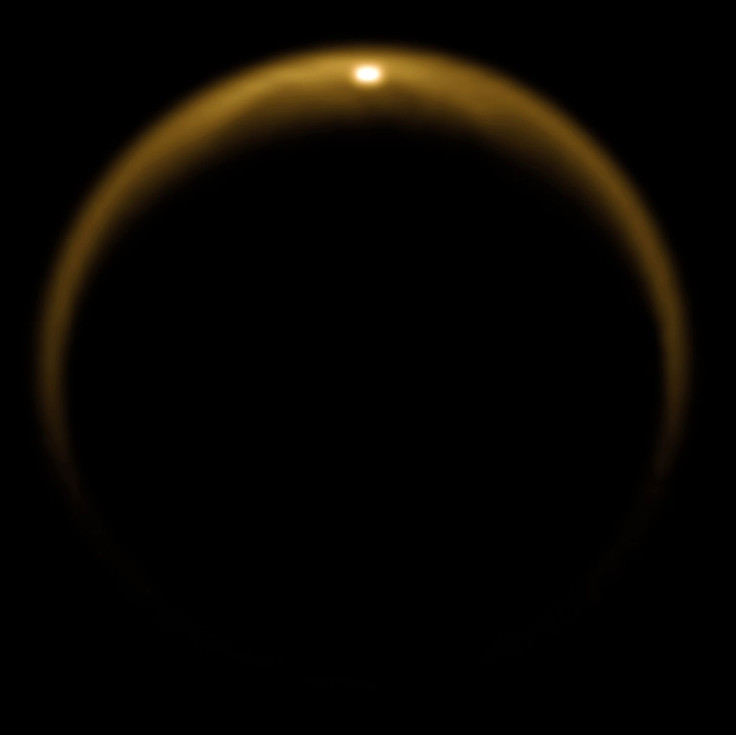Saturn's Moon Titan More Earth-Like Than Previously Believed

Saturn’s moon Titan, which is larger than the planet Mercury, is a unique object. The moon has a thick atmosphere and dense hydrocarbon lakes filled with methane and ethane, and is believed to be the only body in our solar system other than Venus, Earth and Mars to have wind-blown dunes on its surface. Moreover, much like Earth, Titan harbors rivers and seas, albeit made of liquid methane.
A new study, published Thursday in the journal Geophysical Research Letters, adds to the list of similarities between Titan and Earth. According to the study, conducted by scientists at the University College London (UCL) Mullard Space Science Laboratory, Titan is the first known planetary body in the solar system -- apart from Earth -- to have polar winds that dissipate gas from its atmosphere out into space.
“Data from CAPS [Cassini Plasma Spectrometer] proved a few years ago that the top of Titan’s atmosphere is losing about seven tons of hydrocarbons and nitriles every day, but didn't explain why this was happening. Our new study provides evidence for why this is happening,” lead author Andrew Coates said, in a statement released Thursday. The spectrometer, designed partly at UCL, was carried on board the Cassini probe, which has made numerous flybys of the moon.
On Earth, polar winds occur in the polar regions of the magnetosphere and are caused by the ionization of gas molecules by solar wind.
“Titan's atmosphere is made up mainly of nitrogen and methane, with 50 percent higher pressure at its surface than on Earth,” Coates said, in the statement. “Although Titan is ten times further from the Sun than Earth is, its upper atmosphere is still bathed in light. When the light hits molecules in Titan's ionosphere, it ejects negatively charged electrons out of the hydrocarbon and nitrile molecules, leaving a positively charged particle behind.”
This process is similar to the one that takes place in Earth’s atmosphere, where “photoelectrons” are drawn up along the magnetic field and escape at the poles. However, unlike Earth, Titan does not have its own magnetic field and is instead bathed in Saturn’s rapidly rotating magnetic field. So, in its case, the newly created electrons are drawn away along Saturn’s magnetic field -- which forms a comet-like tail around the moon -- and create their own electrical field, which, in turn, is strong enough to pull the positively-charged particles through the sunlit portion of the atmosphere.
“It gives further evidence of how Titan, despite its location in orbit around a gas giant in the outer Solar System, is one of the most Earth-like objects ever studied,” UCL said, in the statement.
© Copyright IBTimes 2025. All rights reserved.






















